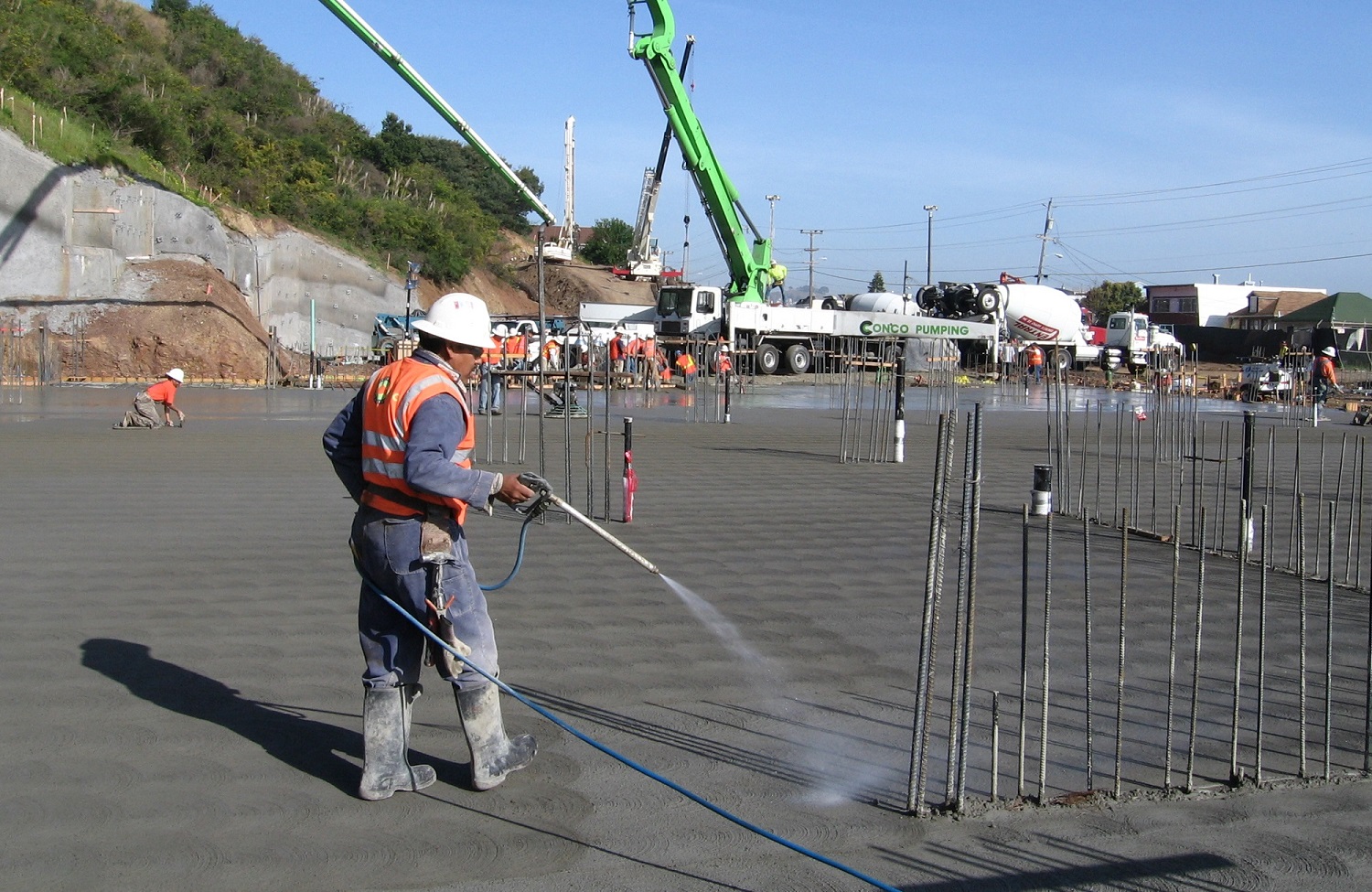
Short Introduction to Concrete and Curing
What is concrete?
Contrary to popular belief, cement and concrete are not the same thing. Cement is actually a component of concrete. Concert is made up of three basic components: water, aggregate (rock, sand, and/or gravel) and Portland cement. Cement, usually in powder form, acts as a binding agent.
Protection of concrete is needed in each step of processing! The time necessary for reaching the initial set will be extended as a result of the exposure of concrete to the cold weather condition. Curing which provides proper heat and moisture could be an effective way to protect the concrete. [1]
Guide to Concrete Curing Time and Methods [2]
Fresh concrete is very sensitive and easily ruined. If cured properly, it will be strong and reliable.
Concrete should be kept in proper temperature and dampness. If the concrete is not cured properly, it is likely to develop cracks on its surface. Its surface will have low strength and little resistance to abrasion. The entire curing period varies according to weather conditions, concrete mix, and its placement, but it will take about a month.
The criteria affecting the length of curing time: [3]
- The physical and chemical characteristics of the mixture
- Strength
- Ambient weather
- The condition of future exposure
Sometimes drying and curing are defined instead. For purpose of clarification between these two let’s explain the difference Between Drying and Curing: [4]
Drying
Drying of concrete is defined as providing the proper conditions to allow the concrete to achieve a moisture condition appropriate for its intended use. The moisture condition of a concrete slab is of significant importance for the application of moisture sensitive floor finishes. The moisture condition is specified as a maximum relative humidity by percent or a vapor transmission rate in lb/1000 ft2/24 hr. A typical value specified for relative humidity may be less than 75 to 80 percent while a commonly specified value for vapor transmission rate may be 3 lb/1000 ft2/24 hr.
Curing
Curing serves these main purposes:
- It retains moisture in the slab so that the concrete continues to gain strength.
- It delays drying shrinkage until the concrete is strong enough to resist shrinkage cracking.
- Properly curing concrete improves strength, durability, water tightness, and wear resistance.
Curing of concrete is defined as providing adequate moisture, temperature, and time to allow the concrete to achieve the desired properties for its intended use. This would mean maintaining a relative humidity in the concrete of greater than 80 percent.
Below are the aims of curing explained in detail: [3]
- Retaining the presence of mixing water during the early hardening period
- Ponding or Immersion
- Spraying or Fogging
- Wet Coverings
- Left in Place Forms
- Preventing loss of mixing water
- Sealing the Concrete with Impervious Paper or Plastic Sheets
- Applying Membrane-Forming Curing Compounds
- Accelerating strength gain by supplying heat and additional moisture
- Live Stream or Steam Curing
- Thermal Wiring
- Electrical Heated Form or Pads
- Concrete Blankets or Covers
This method is suited to curing flat surfaces on small jobs. The curing water should be no more than 20°F cooler than the concrete surface. Temperature differentials above this could result in development of thermal stresses and eventual cracking.
The method is good when temperatures are well above freezing, and humidity is low. In fact, this method reduces the risk of plastic shrinkage cracking.
After concrete has hardened, this method is used to prevent surface damage.
Left in place forms usually provide satisfactory protection against moisture loss for formed concrete surfaces. If the forms are made of wood, they should be kept moist.
Impervious papers or plastic sheets could be used on completely wet concrete. However, the concrete should be hard enough to prevent surface damage.
Membrane-forming curing compounds are used to reduce evaporation of moisture from the surface of concrete. They can be clear or translucent and white pigmented.
White-pigmented compounds are recommended for hot and sunny weather conditions to reflect solar radiation.
Live stream at atmospheric pressure and high-pressure stream curing in autoclaves are two methods of live stream curing. The temperature for live stream at atmospheric pressure should be about 140°F or less until the concrete gains the desired strength.
Thermal wiring is usually used as heating element embedded near the surface of the concrete. Its purpose is to prevent concrete from freezing during cold weather concreting.
Electrical heated form or pads are used primarily in the precast concrete industry.
Insulating blankets or covers are used to cover and insulate the surface of concrete against freezing during cold weather concreting. The concrete should be hard enough not to get damaged during covering.

Add comments: